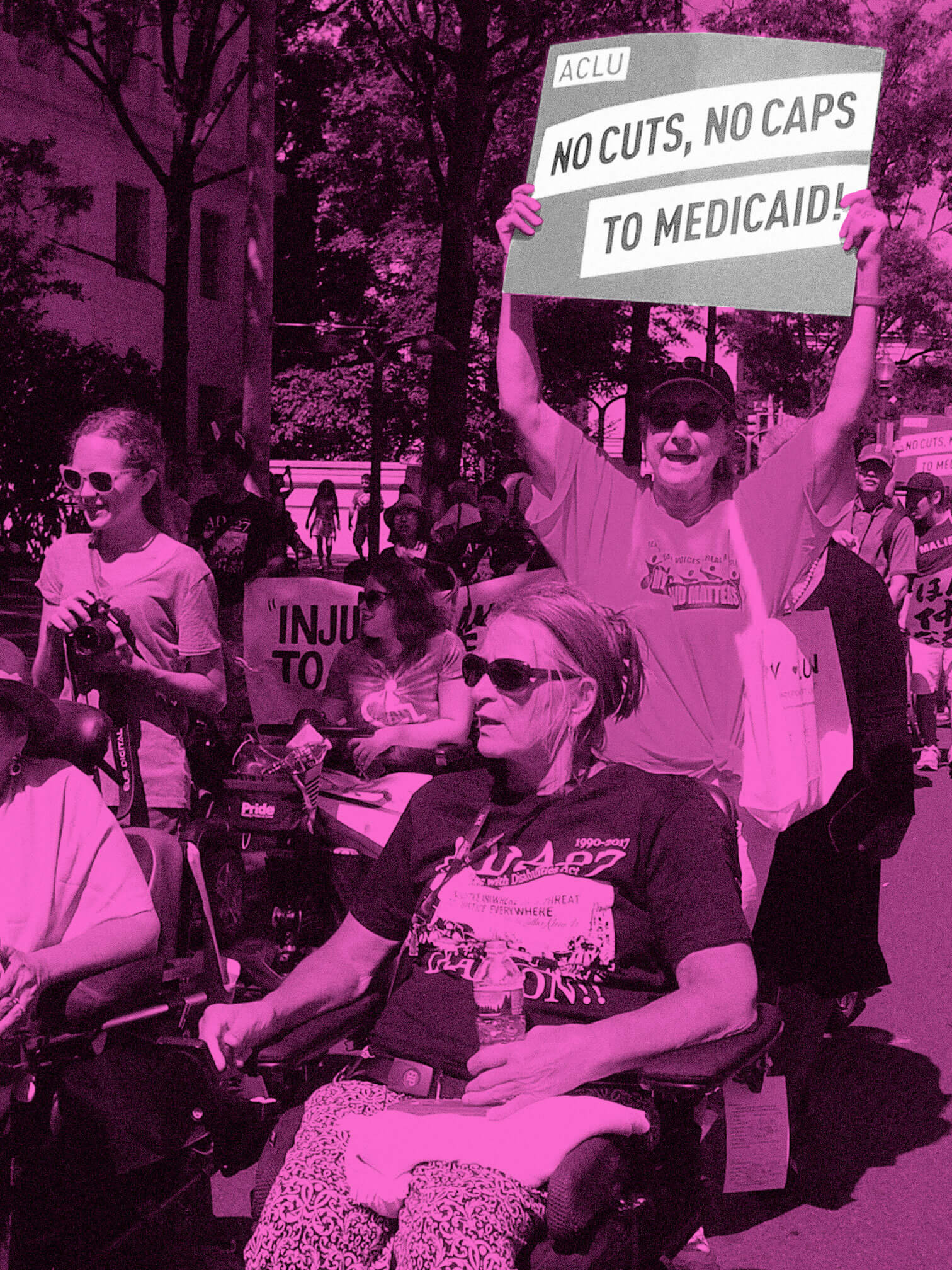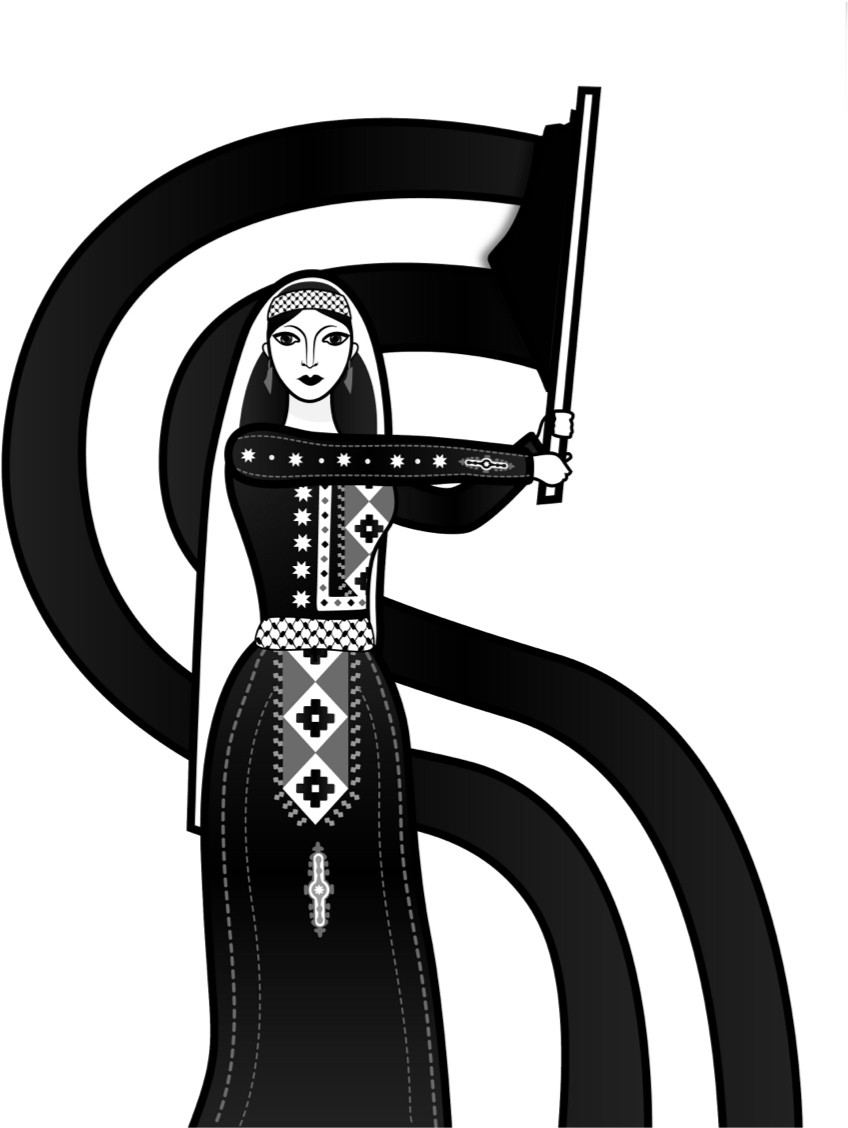
GENDER
AND THE AMERICAN
DISABILITY MOVEMENT
Judy Heumann Andraéa Lavant Chella Man
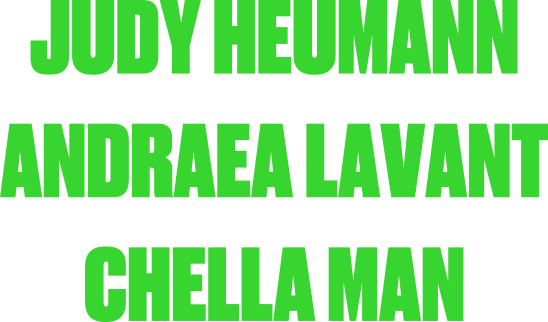
Judy HeumannAndraéa LavantChella Man
This July marked the 31st anniversary of the Americans with Disabilities Act (ADA), the landmark civil rights law that prohibits discrimination against individuals with disabilities in all areas of public life. With a year marked by an ongoing international health crisis and the popularity of documentaries like CRIP CAMP, we are reminded of the tireless efforts of activists within the disability rights movement. CHIME Zine speaks with Judy Heumann, Andraéa LaVant and Chella Man about their intersecting identities as disabled people, what others can learn from the disability rights movement, lessons from the 1995 UN Fourth World Conference on Women, and more.
CHIME Zine: When you hear the topic "gender and the disability movement," what's the first thing that comes to your mind? What do you want to discuss or what are the biggest issues as they pertain to gender in the disability movement today?
Judy Heumann: I'll go first; no right or wrong answer. But when I think about gender, I think first about how difficult it can be as disabled people to really come forward and be our true selves. So frequently people don't see us completely and people think that we're asexual or that we don't have the same interests as other people. So, it feels to me in many ways that how we present ourselves as disabled people within the disability community may be different than how we feel when we present ourselves in a significantly non-disabled community.
Andraéa LaVant: I often think about what we talk about in terms of intersectionality in general and identity overall. And when we enter a space, the wholeness of who we are and how that impacts our experiences. And for me as someone who identifies as a disabled Black woman, I've been asked if there's a hierarchy of sorts—'Would you consider yourself more Black? More disabled?' It's like, you can't separate any of that because it all informs how I experience the world. And aiming to pull one out—it's impossible. And yet I feel like that's often what we're asked to do, right? To be disabled in one space and be a woman in another space, or whatever gender identity in one space, and be Black in another, and it's impossible to do so, even though that's what it often feels like the world is asking us to do, to represent only one aspect of who we are. And then I think about some of the actual issues that we experience as disabled women in terms of reproductive rights, in terms of just accessing healthcare in general, getting on a table at the doctor's office. I mean, there are so many issues around both equity and equality when it comes to what I experience. But again, it's just the totality of who I am.
Chella Man: I agree a lot with everything both of you just said, that all of the identities are inextricable from one another. But I agree that this is a very broad question. The first thing that came to mind was that as a femme person, it's so much harder to be diagnosed with disabilities and that's so notoriously known. I mean, with many different disabilities, but especially on the autism spectrum. And there's been a lot more dialogue about that recently, how the numbers of autism among femme people are so much less than in masculine people. When in reality, people just weren't taking femme people seriously and that's across the board with many different disabilities. So there definitely are intersections and overlaps of systemic oppression, and to be a femme person or a non-binary person, and to be disabled, you're definitely fighting more battles than others.
Judy: I also think one of the important aspects here is helping people who have disabilities be able to meet other disabled people who are experiencing the issues that we're discussing. I think one of the reasons why, Chella, you are so important is that you have ventured into being a truly authentic person. And I think that authenticity and willingness to be who you are is something that is very important for other transgender people, but not just for that. I think when Andraéa speaks about herself as a Black, disabled woman, and I speak about myself as a Jewish, disabled woman, and we can throw those terms around, we look at these components of ourselves as a whole. But as Andraéa was also saying, so many people don't, and we, all three of us and everyone else reading this, ultimately wants to be able to bring our whole self to the table. But we really need to be able to have true discussions about what prevents us from doing that. And what are we doing in our different communities to really speak to women, speak to Jews, speak to Black people, speak to whoever else, about what we experience that makes us feel separate and unequal and what we need to be doing as communities to address that. And so I think these types of questions, which are unusual, I think are also really important. Andraéa also raised another issue about the whole issue of women needing medical exams. And if you're a wheelchair user, or if you're deaf or you're blind, or you have an intellectual disability or speech disability, whatever it may be, they're all these additional barriers that people may face. And so just having this discussion, I think is really important to allow people to see that they're not alone and that there are still barriers to overcome and how as a community we can help each other move forward.
CHIME Zine: Judy and Andraéa, we listened to your podcast episode that you did together, where Judy was talking about how proud you are of Andraéa's work saying, “I'm actually still proud of the work you're doing, because I think overall in the disability movement, while we're continuing to really work and expanding the movement to reflect our diversity, we're really doing it, in my mind, in a way that's different than many other movements because we cut across everything. I really hope that some of the outcome of our work is that the organizations that are not disability-focused recognize they need to be including disability, disabled folks in their work.” And so our question is what can other movements learn from the disability movement? And in particular, the queer and feminist or queer women's movements, just because those are uniquely gender-focused, even more so than others.
Judy: I think what other movements can learn is how difficult it is to have these discussions and how we're really, in many ways, in uncharted water. We have in the last number of years recognized that we, I mean, I can speak for myself now, grew up in certain stove pipes that really weren't representative of the disability community. We've had to learn a lot—racial diversity, sexual orientation diversity—but most significantly through meeting people with many different types of disabilities. When I was younger, I really didn't know people who identified as having depression or anxiety or bipolar. And I knew very few people who were deaf or hard of hearing and very few people who were blind or low vision and very few people who had intellectual disabilities as well as people with many other types of disabilities. So partly I knew that the absence of these different groups was a problem for being able to really help support and develop a truly broad disability rights movement. In the earlier years setting up cross-disability organizations was a big deal because the groups had never worked together. And then bringing in racial diversity in a meaningful way within each of those communities, because each one of our communities is, and by that I mean particular labels of disabled people, have been going through changes. And the movement itself really is very much looking at the need for us to all come together. And I think what we offer other communities is not that we've done it, not that we've done it perfectly at all, but I think that we really do have a sincere commitment to wanting to continue to grow our movement. And the only way our movement can really grow is if it genuinely looks at who was in and who was out, and what we need to do to make those changes.
Andraéa: I agree. I think that again, it's the acknowledgement of the intersections and recognizing that within all of the other movements—we're there, whether it's spoken of or not. And so I think what is important to implement or consider is the opportunities to be proactive when it comes to engagement, rather than being reactive in terms of inclusion, engagement, belonging, whatever the buzzword is at the time. Disability, historically, even when considered, is often an afterthought. And so I think that for gender-focused movements and otherwise, one of the things that we are aiming to practice is considering what access looks like from the very beginning before somebody has to request an interpreter or say that they need CART [Communication Access Realtime Translation], so that people feel like they are meant to be there, they're supposed to be there, that they're welcomed there without having to basically make themselves so blatantly known. Like I said, I think we, even in the work that we are doing from a consulting perspective, even in disability spaces, we are encouraging that. And so that's something that I think other movements really should be focusing on as well. It's that proactive approach to inclusion and engagement.
Chella: I think both of those answers are so beautiful. And it's unfortunate that I feel like disability is always the afterthought, especially as it is the largest minority that makes up 15% of the world population. And I believe if the continuum of disability was truly acknowledged, I feel like it'd be 50% of the population, or more to be honest. But there's so much to learn from the disability movement. I mean, there have been so many incredible milestones like the Capitol Crawl, everyone should look into that. When I learned about that I wished it was taught in history because it is my history. The resilience that disabled individuals have is outstanding. And the fact that our world isn't built for us in so many different ways and in so many different forums, we, as disabled individuals are confronted on a daily basis with triggers of ways things aren't functional in our advantage, to make things easier for us. And I believe that because of this, all disabled people have to make peace with anger, frustration, and rage at a very young age– well, depending on when you get your disability—for me at a very young age—and understand how to set specific drastic feelings aside when you want to create a movement and use your voice in an intelligent way, that will actually further the movement rather than just rage. And rage is very valid and it's totally important to fuel movement, right?
Judy: I think that our movement itself has so much further to go because the vast majority of disabled people, in my view, are not a part of the movement. They may be spectators, they may be looking in more and seeing the value, but I think right now, the environment that we live in is slowly changing so that some people, for example with invisible disabilities, may be thinking about dipping their toe in the water and even talking about the fact that they have a disability. But if we really over time can harness the breadth of who we are and allow people to understand that disability is a normal part of life and that it is valuable for people to be preparing for their future, right? So preparing for their future may well mean as you get older that you may experience hearing loss or memory loss or anxiety or other forms of disabilities that people frequently don't want to look at. For example, when our community is building new housing, we’re able to say “well, I may not need accessible housing today, but I have a friend or I may someday need it”, instead of so strongly putting it off. And I think really other movements embracing the fact that disability is in all of the communities that we live in or live around, that it will strengthen their movements also to be able to bring disabled individuals from these various communities. I think it's very complex. But I do think that we're trying to do this in a way that other communities have not been doing.
CHIME Zine: In the same podcast conversation you spoke about Stacey Park Milbern, and we wanted to bring her and her important work into this room. On the episode, Andraéa said Stacey really centered those that are most marginalized within the disability community. Can you explain a little bit about what you mean by that? How can we continue her work and ensure that we're centering the most marginalized voices?
Andraéa: Thank you for asking that. So indeed, Stacey Park Milbern was known as one of the curators of the framework around disability justice, which is really about centering those of us that represent multiple marginalized identities even within disability. So we think about disabled people of color here, trans folks and Indigenous, and others who would be considered the most impacted by oppression and specifically multiple forms of oppression. And that's really what it's about; the understanding that when I think about the evolution of disability and the work that's being done, when I think about what equality means, which is that everybody essentially needs the same things, right? And then equity is kind of saying we all need different things, but justice is the acknowledgement that even the systems that are created were never created for us in the first place. And so it's even about really the understanding that—and there's 10 principles, and we won't go into all of this disability justice—but it's things like interdependence and the intersectional aspects, it's about even looking at capitalism or in this case anti-capitalism and just knowing that the world was not, and society, wasn't built for us. And so what Stacey really focused on is that—how do we as a community even meet one another's needs, and how do we center those of us who are often left out of these important conversations? And so the work that we did together specifically on Crip Camp was around making sure that even within disability there are certain conversations that are heard - conversations about our experiences as disabled people of color, as queer folks. And so that's what we did together. We had hard conversations, things like thinking about trauma-informed care and how that looks within our communities.
Judy: I think one of the beautiful parts about Stacey is she brought her whole self forward and she felt proud of who she was. And she took our experiences and brought them to the forefront by bringing other people who had similar thoughts to her to come together and again, to explain the movement. And when she and Andraéa began to work together on the campaign around Crip Camp, you could really see how they created something that was quite new, quite unique, and really in a very short period of time exploded by changing the horizon. It brought so many new people forward both within the U.S. and around the world. And I think the diversity of the discussions that were happening with a Crip Summer Camp those 16 weeks, we really intended not only to empower disabled individuals, but to also help explode around myths because we were learning about other people. I really need to underscore over and over again that we don't know each other, one person to another, we don't know each other from community to community. And I think there was a richness in what Stacey was doing in Oakland, and that combination of Stacey and Andraéa who very similar, but very different, I think really has created something that's quite unique and beautiful.
Chella: I feel like there's not even much to add, you both summed it up so beautifully. What essentially I feel like is being touched upon is collective liberation, the idea to uplift the people most impacted by systemic oppression. And the way to do that is typically to find people through the labels of identity that they possess, which is incredibly powerful, and I think we need to continue to do across the board. But at the same time, it's very important to have a balance with those labels and make sure that it doesn't become tokenization, and to see the person or the individuals who have these labels as well. And I would just like to emphasize that as important as identifying and bringing up trans disabled, queer and BIPOC individuals, it's really important that we don't forget who they are as well behind all of the labels they possess.
Judy: I think it's also important to recognize that in my view, there are no political structures that have ever accepted disabled people as meaningful parts of the community. And that I think is something that we're involved in trying to create the visibility of who we are and the inclusion of our voices. And I think really helping people learn about ways that movements have evolved in different countries and what has occurred to allow people to feel empowered and respected and gain control in our country and countries around the world where we've all been typically so marginalized. A whole other area where we need to be doing, in my mind, more work is with disabled veterans and allowing societies to see the benefits that disabled veterans get, which they are deserving of, but civilians are also deserving of those benefits. So I think we have a lot further to go, and opportunities to do a lot more.
CHIME Zine: We have the intersections of many identities in this conversation. Would it be possible for you to talk a bit more about your intersectional identities and how that has impacted your role and experience in the disability movement?
Chella: I touched upon this briefly when I was speaking about the acknowledgment and perseverance and resilience that I had to learn on a daily basis when being confronted with people who didn't understand me being deaf, me being deaf stereotypically, and not understanding what to do because disability education is unfortunately not taught. So it was a combination of learning how to deal with discrimination across the board of being trans, being confronted in the bathrooms in elementary school at such a young age, being the only non-white person in my class and growing up for so much of my life. And then of course also being disabled around so many non-disabled individuals, there was a level of self-worth understanding that I had to deal with. I did a lot of explorations within myself about shame and learning the burden complex and understanding that I am worth everything for just simply being, and that other people's ignorance is not necessarily out of malicious intention, it's that they don't know. And the step towards a better world can be education and educating in a way that is accessible and inclusive across the board of so many things: disability, race, gender, sexuality, it's all possible. And being disabled is just one component of that. Like Andraéa was saying, all of who you are is inextricable from every other identity you encompass. And that could be disability and race and sexuality and all the things, but also just who you are, like if you're a goofy person, if you are angry, I don't know. There are so many facets of identity and you can't take one component out because it all forms who you are.
Judy: For me, my parents—I'm first generation—my parents were sent out of Germany in the '30s and we lost a lot of our family. And so being Jewish was a big part of our life because all of our family were survivors, but disability was really seen as something to feel badly about, a shame. And so being able within the Jewish community over decades to really begin to allow people to understand how we were being marginalized, even when there were efforts to include, how those efforts were still not completely inclusive. And really being able to have more in-depth discussions that take place over many years and being able to somewhat be able to measure how we [live] as disabled Jews, disabled Jews of color, disabled Jews of color from the LGBTQ community. I think one of the interesting things that's going on now in the Jewish community is that there are more discussions going on regarding who are the marginalized populations within the Jewish community and these different communities that are setting up, and then how these communities are also beginning to work together. So in some way, I think there are some opportunities for intersectionality to be occurring within different groups. I'm right now just talking about Jewish people, but I know that for those of us who are engaged in religious activities there’s a very similar background that we all experience about being marginalized, even when people feel like we're not, whether or not the doors are really open for people really to be included. I think we're still struggling with that, but at least the discussion is on the table.
Andraéa: Yes, I talk a lot about the intersection of Blackness with being a disabled woman, and yet even within Blackness, I think a lot about my experience within the Black church, for example. So talking about faith communities, and in general, what I'm grateful for is that we're now, I think for the first time in the past probably year and a half with the kind of rise around the racial injustice and with COVID and the opportunity to have certain conversations, even when we're talking to employers about working from home and things like that, it felt like the first time in my life where I could bring, or at least bring up all of this in one space, like my intersectional identities. Do I think we've gotten to a solution yet? In most ways, no, but I'm grateful that we are starting to have these conversations. And I know for myself I'm always saying that my experience as a Black disabled woman is not the same as a white disabled male, it's also not the same as a queer person of color who's disabled, they're just not. [And so I think it’s important to have] more voices in the room, but even still in these spaces that are, for example, meant for certain aspects of identities. Places where they work on social justice issues or in this case, when we're talking about gender, again, social justice spaces, oftentimes it's like they're so focused on that one issue or the one identity that I know that I've experienced so much being dismissed because it's like we're working hard enough to try to resolve all of the oppression, the racism that we experienced or the sexism that we experienced, or whatever that is, that heaven forbid they be open to the consideration that people within those spaces are actually experiencing multiple forms of oppression at the same time. And so it’s really my hope as we continue to have conversations like these we see more change happening because people are acknowledging that there's more that needs to be done to ensure that all of our needs and experiences are considered.
Judy: One thing I feel is really important about this discussion is that the term intersectionality allows people to see that more and more people do see themselves and the different parts that make us a whole, and the ability to tell these stories about who we see ourselves as being, and where we feel we're being denied, and how we feel that denial or discrimination is adversely affecting our ability to bring our whole self and to have discussions on what it means to be able to bring one's whole self. And this is not a discussion that only relates to disability. It’s all across the board with many marginalized communities. So I think the ability to have discussions about what the issues are, how to have these discussions, how to learn from each other and move forward are really valuable for setting an example.
CHIME Zine: Our final question is for Judy – in 1995 the UN held the Fourth World Conference on Women. And a few years after that conference, you spoke about the conference saying “The most profound significance of this Forum is that it signals that the issues of disabled women are truly integrated into the Platform for Action of the Fourth World Conference on Women - the main product of the 1995 Beijing Conference...Being included prominently in the Beijing Platform for Action is a significant victory, but we all know that it will remain just a paper victory unless we work every day to make the words come alive and to make the goal of full equality come nearer.” To mark the 25th anniversary of the conference, the UN hosted the Generation Equality Forum and our most recent issue of the Zine was dedicated to the forum. Could you reflect on 25 years after Beijing and the impact of The Beijing Platform for Action? Was this a turning point for disabled women and people who experience gender-based violence who are disabled?
Judy: I guess it depends on how many degrees we're turning. And by that, I mean did we do a full circle so that we've ameliorated all the forms of discrimination? Absolutely not. But I think the conference in Beijing and the subsequent conference 25 years later really has shown not only the growth of the women's community around the world, but how disabled girls and women still are facing such significant discrimination. I would say now it is not uncommon for people to acknowledge things like violence against disabled girls and women. Statistically, there are more disabled girls and women and boys and men with disabilities who experience sexual assault as an example. And prosecution against perpetrators is still something that is not happening in many countries even against perpetrators of non-disabled women, but it's certainly worse for people with disabilities because we're considered not to be credible witnesses. Even if you have a physical disability, if you're blind or you're deaf, or you have an intellectual disability, then you are much more highly discredited. So these discussions are more prominent, they're happening in more communities. I think you can go to almost any country now and whether or not it's a public discussion or not, you can sit down with disabled women and talk about these issues and talk about the changes that people are trying to bring about. I think another issue is that when we talk about what we can offer as a disability community, one of the points that I think is very important is that non-disabled girls and women who experience sexual assault or other forms of violence are also much more likely to acquire a temporary or permanent disability. And so when the women's community fails to acknowledge these issues, it's also leaving behind a significant part of the population that they should in fact be including because we're women and we shouldn't be cast out because we have disabilities. And I think, again, we're seeing more of this happening, but not at all to the degree that it needs to be.
CHIME Zine: Before we go we are eager to open the space to anything else you might like to say.
Chella: I feel really honored to be asked to be here alongside both Judy and Andraéa, because I really truly did not have a lot of disability representation for so much of my life and I'm just now finding people I don't have to explain myself to in that way. So I really appreciate knowing you both and want to deeply thank you for all the work that you've done, because I know that it's impacted my life, even when I was seven years old, having the ADA, I don't know where I would be otherwise, so thank you.
Judy: And I want to say that I hope what people take away from this conversation is, what do they need to change in their own lives? What do they need to do either as a disabled person to potentially become more engaged or as a non-disabled person to listen to what we've been saying, look at how you can continue to make a difference in advancing the inclusion of disabled people.
Andraéa: What I'm appreciating so much about even who is represented here and what we represent, not just in how we look and not just the identity of disability, but it's really representative of the fact that across the spectrum, in terms of the work that we do, of the places that we are, the fact that disability is literally everywhere, where we see Chella and where we see Judy, and where we're seeing Judy from a policy perspective all over the world, impacting our systems and our world. There's so much here in this space and this is just proving that we really are everywhere and that there's so much opportunity to ensure that our perspectives, our expertise, really impacts the world and in the best of ways. So I'm grateful. Thank you.
This conversation has been edited for clarity.




ON THE DIVIDE

ON THE DIVIDE is a documentary film that follows the story of three Latinx people living in McAllen, Texas, who, despite their views, are connected by the most unexpected of places: the last abortion clinic on the U.S./Mexico border. Rey is a devoted Catholic and security guard at the clinic where he protects women from protesters as they enter the clinic. Mercedes initially went to the clinic to have an abortion, but was stopped outside by a protester who ultimately convinced her to carry the pregnancy to term. She later became a heavy anti-abortion advocate and worked for a local Crisis Pregnancy Center, a type of facility that works to convince women to carry out their pregnancies through the use of religious tactics, shame tactics, and misinformation. Denisse, an escort at the abortion clinic, protects patients as they walk from their cars to the clinic from the verbal and occasionally physical attacks of protesters. While she’s never had an abortion herself due to her personal beliefs, she strongly supports other women’s right to choose for themselves.
Below the film’s directors Maya Cueva and Leah Galant speak with Paxton Smith, an 18-year old Texan activist who made global headlines when in June 2021 she made a last minute change to her valedictorian speech at her high school graduation, using the platform to speak out about Texas’s newest abortion ban, SB8, which eventually went into effect in early September. The law prevents patients from getting an abortion as early as 6 weeks into pregnancy and also allows private citizens to sue abortion doctors or others involved in helping patients receive an abortion after 6 weeks. It is one of the most restrictive abortion laws to date.
PAXTON: In the beginning of the film, we see protesters outside the abortion clinic, we see the start of a crisis pregnancy center, and a woman whose life is seemingly changed for the better with that center’s help. She becomes a very outspoken pro-life supporter. We also see the perspective of a clinic escort and a security guard who protect the patients receiving abortions from the relentless verbal and emotional abuse that the protesters spout on them. What made you choose to cover such polar opposites in your film?
LEAH: We really did want to make a film on reproductive justice, health and abortion that we had not seen before. Being able to share complicated people and nuanced perspectives, we were looking outside the dichotomy that you often see when thinking about pro-life and pro-choice. The reality is a lot of people are more complicated than those two labels.
PAXTON: What was the most surprising thing you discovered in making this film?
MAYA: There's just a huge distrust around the mainstream media, particularly in this area, and for good reason. There are so many outsiders who come in, reporters searching for a certain narrative… wanting to represent McAllen, and the [Rio Grande] Valley as this poor Brown Latinx community with no resources, and it's as if they don't have a voice of their own at all… so I think that really shifted the way we told the story and the way that we interacted with everyone in the community, because we wanted to make sure that they were very much a part of this narrative, and it wasn't just us creating what the story was.
PAXTON: In the film, you show that some of the heaviest backers of the anti-abortion movement are Catholic, while some of the strongest supporters of the pro-choice movement are also Catholic. Both perspectives
use religion as a backbone, or at least a supporting measure, for their approach to abortion. Can you speak a little bit about that?
LEAH: It's just an interesting concept to think about faith and its role here with abortion because we also want to challenge the idea that just because you're religious you’re anti-abortion, and just because you're not religious you’re pro-choice. We're trying to disrupt that by showing very complicated people like Rey, who is very embedded in his faith but can't go to his church because he's been kicked out even though he's still a practicing Catholic. And so I think we're basically showing that those two don't have to be mutually exclusive. Hopefully people will see that religion has been used as a tool to divide, but there is plenty of space within religion where it can be used to unite.
PAXTON: One of the unwavering minds in the film was an escort for patients who needed abortions. She never once got an abortion. She had kids past the point of what she could handle financially. When she found
out she was pregnant again, she said “I remember thinking that I should have an abortion but A) I couldn’t afford it, and B) I just could not get the courage to do so.” What did you make of this?
LEAH: Maya and I were both really drawn to her perspective because again, it's something that you don't necessarily hear. I think a lot of people might be able to resonate with Denisse because they may not personally want to have an abortion themselves, but may still be pro-choice.
PAXTON: A lot of people say that if a person doesn’t have a uterus then they don’t have a say in the issue of abortion. In this documentary, however, Rey, a man, has a very large role. Why did you choose
to include his perspective?
MAYA: We had never met someone who had really changed their views around abortion. He is a religious man who ultimately started working at the clinic and then felt like it was his purpose to do this work. We felt his voice was so important to include in this film because his perspective could maybe reach a lot of people who wouldn't think that they have a stake in this issue around reproductive health and restrictive abortion access.
PAXTON: Y’all often say “what is choice if you don’t have any options?” Could you elaborate on that?
LEAH: I think everybody likes to think about abortion through those two lenses: pro-life or pro-choice. But if you dig a little bit deeper, especially in a region like McAllen, and you follow the people in our film, you'll see that actually they don't have many choices to make.
MAYA: If this clinic were to close, people would have to travel over 250 miles to get to the nearest clinic. In this region in particular, there's a multitude of intersectional issues at play because if someone is undocumented, then they have to risk deportation checkpoints, and then they're risking deportation to try to get to the nearest clinic. Many people also don't even have access to doctors around the region and access to other forms of reproductive healthcare – birth control, Plan B – it goes beyond abortion. We really want to hit home that this area is ground zero for the fight around reproductive healthcare, where choice is ultimately stripped away.
PAXTON: At the end of the documentary you briefly talk about Rosie Jimenez, the first documented woman to die after the passing of the Hyde Amendment in 1977, which bans the use of federal funds
for abortions, meaning that her health insurance, Medicaid, no longer covered the procedure. She was left without the funds to pay for an abortion on her own, so she got one from a midwife instead
of a doctor. She passed away a few days later due to complications from the procedure. Why is this the story you ended the documentary with?
LEAH: We really wanted to uplift Rosie’s story to show that this is what happens when we don't have resources available.
MAYA: Rosie is really a symbol of why many reproductive justice organizers in the [Rio Grande] Valley keep fighting. What happened to Rosie and other patients is really under-reported in the media. Rosie symbolizes how, even if abortion is legal, it is still really inaccessible to many people.
PAXTON: What would you say to someone who does not face the stigmas, restrictions, and now bans, on abortions that citizens of Texas face?
LEAH: I would say just because you don't live in a state where there's extreme dire access, you're still part of this country, and you should still care.
MAYA: And we need to center the Latinx stories especially within this conversation, because the mainstream media often centers white voices. So we really need to make sure that the voices of people in these border communities, like McAllen, are really being centered as well.
LEAH: The most vulnerable among us should be the ones always centered in this narrative.
MAYA: We want people all over the world to understand that the fight continues, and we all need to be involved as much as possible. Now is the time to donate to local reproductive organizations if you are able.
To learn more, please visit South Texans for Reproductive Justice, La Frontera Fund, Lilith Fund, the Afiya Center, Whole Woman’s Health, Indigenous Women Rising, and WRRAP (Women’s Reproductive Rights Assistance Project).
ON THE DIVIDE, coming to POV on PBS in 2022.
This interview has been edited and condensed for length and clarity.
Kubra Khademi

Kubra Khademi is a multidisciplinary Afghan artist based in Paris whose performance-based and painted work responds to extreme patriarchal politics. Khademi has been living in Paris as a refugee since 2015 and through her practice she has explored themes of national identity, gender identity, and sexuality. Her paintings of the feminine body fly in the face of the purity politics of womanhood with a playful vulgarity. An homage to the coded language that Afghan women often use amongst themselves to make sexual innuendos, her naked women series subverts and resists a patriarchal order that mythologizes womanhood.
Mothers
2 mothers:
Transforming
A generation







“I’ve got the power to change the lives of people in Uganda—and I'm giving that power to my community. I’m encouraging women to recognize their own worth and potential.”
—Teddy Atim, mothers2mothers Site Coordinator in Uganda
Teddy Atim is one of 1,900 Mentor Mothers working at mothers2mothers (m2m), an African organization supported by CHIME FOR CHANGE, whose all-female team of community health workers are on the frontlines of the fight against two pandemics: HIV/AIDS and now COVID-19.
Despite the fact that sub-Saharan Africa makes up only 11% of the world's population, the region contains over half the global total of people living with HIV/AIDS, with 28.5 million positive adults and children. Of those living with HIV, African women—especially young women—are disproportionately burdened with unacceptably high infection rates due to the harmful disadvantages of structural and cultural sexism.
Born in Cape Town, South Africa in 2001, m2m's answer to these challenges was a simple, yet powerful solution: to train and employ local women living with HIV as frontline health workers—“Mentor Mothers”—who use their own personal experiences and understanding of their community to help their peers access life-saving health services, education, and support. With an initial focus on preventing the transmission of HIV from mother to baby, m2m now delivers a range of services for newborns, children, adolescents, and families, to ensure the whole community thrives, not just survives. Over the last 20 years, m2m has created jobs for over 11,500 women living with HIV in sub-Saharan Africa as Mentor Mothers, who have in turn reached over 13.5 million people.
But still too many girls, women, and families are denied the autonomy to decide what is best for them, held back by discriminatory economic structures and oppressive gender roles.
Speaking to these challenges is m2m Spokeswoman and Site Coordinator in Eastern Uganda, Teddy Atim.
My name is Teddy Atim and I am 27 years old. I am one of the 1,900 m2m Mentor Mothers who are connecting their peers in their local communities to life-saving health services and education.
I am a leader in my community. I am an entrepreneur. I am a role model. I am a married woman with three children.
I am also living with HIV.
People are still surprised, shocked even, when they learn about my status. I feel lucky and grateful for the way I was able to turn one of the toughest times in my life into my greatest opportunity.
In 2014, I fell pregnant with my first child at the age of 20. Having an HIV test done as part of your pregnancy check-ups is a formality in Uganda—a routine that most don’t really think about. For me though, it quickly became all that I could think about. Those five minutes—from the moment they prick your finger to draw a drop of blood to the moment the lines show up on the test—changed my entire life.
What would happen to my unborn baby? Will they be born with HIV? What would happen to my marriage? What would my community, my family, think of me and my baby? I had so many thoughts running through my head.
When I was young, I wanted to make a difference, be a doctor or a midwife. Having seen what my mother went through, I didn’t want to be a housewife. But those dreams reached a sudden end after I dropped out of school because of my pregnancy. I’m not sure whose disappointment was greatest—mine or my parents’; I had let them down, I had let myself down.
To be diagnosed with HIV at the same time made it even more challenging. I thought I no longer had a future, that it had been dug into the ground.
There were a few obstacles which made this a particularly painful time for me.
One is the lack of information and education that exists in my small, rural community, and in Uganda more generally, around HIV/AIDS. People think that if you are diagnosed with HIV, you become a “moving coffin”—that it is a death sentence. The prevalence of HIV/AIDS has gone down overall, but it’s still affecting so many people, and they are scared.
The second is that being a woman in Uganda is not easy. Our society is dominated by a cultural belief that men are superior to women, which most take as an opportunity to control their partners’ ability to decide for themselves or their families. Girls are not expected to finish school or have a career, and instead get married at a young age. Polygamy is still widespread—my mother was one of four wives, and I grew up in a household with 40 children. Women can therefore easily find themselves without a voice in their very own family, let alone in society at large.
I myself have faced obstacles because I am a woman. My husband initially didn’t want me accessing family planning services as he was the one to decide when we would have children—a very common attitude in Uganda. I was lucky to be able to talk to him about it, and eventually get him to change his mind, but not all can. This is one of the main reasons for the high rate of early pregnancy and school dropout among girls. It is creating a vicious cycle.
During this time I was introduced to m2m Mentor Mothers. They talked to me, shared their own experiences, gave me hope. They were living examples of what was possible. They told me I was going to give birth to a healthy, HIV-negative child—I couldn’t believe it! I didn’t know one could be living with HIV and still deliver an HIV-free baby so long as they stick to their treatment. That understanding made me so happy, so free.
Not only did they help me accept my diagnosis and understand what I needed to do to ensure my baby’s and my own health, the Mentor Mothers also spoke to my family and my partner to dispel the myths around HIV/AIDS. I was already experiencing discrimination, from people mocking me saying I “brought HIV home,” to telling me I was going to die soon and infect my child; what I needed was support and acceptance from those who were closest to me. Slowly, I saw things changing. They explained to my husband and family that I could still live a long and healthy life and go back to school if I wanted. My husband’s whole attitude has changed since then. He is now very supportive—he looks up to me and calls me his hope and his future!
I gave birth to a beautiful, HIV-negative girl who is now seven, called Winnie. Since then, we’ve had two more children, who are both HIV-free.
I am not taking any of it for granted. I know that many women and girls are still struggling to get the healthcare they need, or overcome the stigma and other barriers that prevent them from dreaming big.
That is why I joined m2m in 2016. I had seen what change in one person could do amongst their family and their community—I wanted to be that change! I wanted to share my own experience and show other women that they too can stay healthy and ensure their baby is healthy, that HIV is not the end.
Many of the challenges I experienced are also still a reality for many women. Health facilities are hard to reach. Cultural beliefs and gender stereotypes are still widespread. Being ambitious about one’s future is not always an option. COVID-19 has made things worse.
I now have a future. I feel more independent and confident than ever. Thanks to my m2m salary, I can pay for my children’s school fees and have been able to open up a small business which lets me grow my personal savings. It’s nothing big—just a business where I sell items like soap, sugar, cooking oil, and foods to my peers. But to me it’s everything. I’m also planning to go back to school to become a social worker. I want my children to see they can reach for their dreams too.
I know I’ve got the power to change the lives of people in Uganda—and I'm giving that power to my community. I’m encouraging women to recognize their own worth and potential, to not have to rely on men for their life decisions. I am helping ensure the health and well-being of my community by helping to truly end HIV/AIDS. I am supporting women to find their voice and access family planning services.
We really are breaking barriers and transforming a generation—and I will continue to play my part to ensure that every woman and girl feel like they can be their own decision-makers.
We’ve come so far. We can’t stop now.
To celebrate the 20 years of impact driven by Mentor Mothers like Teddy, m2m is calling on people around the world to support its She’s Got the Power campaign to celebrate the power that women have to break barriers and transform a generation.
Find out more about how you can get involved in the m2m campaign by visiting www.m2m.org/power or by following them on social media at @mothers2mothers.

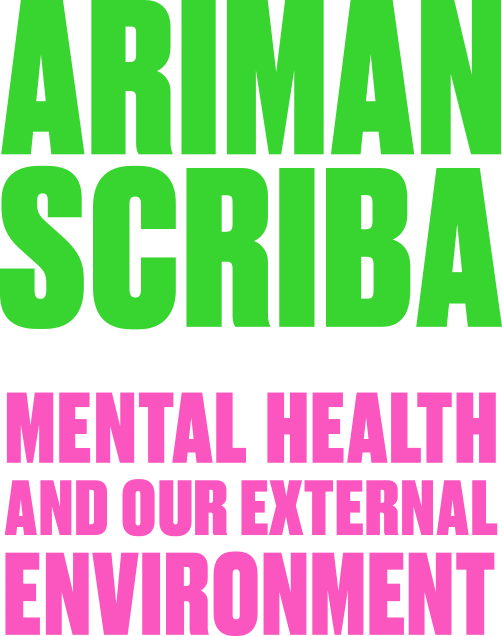
ARIMAN
SCRIBA


Hello everyone. I'm Iman; I go by Ariman – a name I took from a Persian Zoroastrian deity. For the past two years, I've been speaking more and more about mental health in different spaces, both in digital spaces, like Instagram, but also in town squares and at cultural events. Specifically, I talk about the impact that our external environment has on our mental health; how everything around us ends up influencing our thoughts and, consequently, affects our mental health, and also our physical health as a consequence. As the WHO reminds us every year, there's "no health without mental health." There's a very strong link between the mind and the body—you can't separate the two.
Our mind is sensitive to and affected by everything that happens outside of it, sometimes negatively. I specifically talk about discrimination – racial, sexist and homo-bi-lesbo-transphobic discrimination – because it hits close to home and directly affected my brother, Ilyas. Ilyas, my brother, took his own life on December 26, 2019. He was nineteen years old and suffered from bipolar disorder. From that moment on, I began to talk about our experience – both directly and indirectly – completely candidly. I couldn't remain silent any longer, since both my brother and I experienced a whole series of hardships dictated by our physical features which, specifically for my brother, led to immense pain, which then led him to not being here today.
Ilyas had his own world inside of him, made up of so many things. And in my opinion, at nineteen years old he wasn't able to put a name to what he felt — and I won't dare put a name to the things that he wasn't able to. I think this point is one of the pivotal points of his pain: not being able to see himself in the stereotypes of his gender; not being able to recognize himself in what was demanded by society, a toughness and a strength that he didn't possess, that he couldn't bring out in a socially acceptable – if not excessive – way. So much of his pain was, in my opinion, because of this: that vulnerability not accepted for a "male," for a person socialized as a male and as a man. So among the other things I'd like to stress in my everyday life is this: how feminism wants to fully dismantle the gender binary and, consequently, all gender stereotypes, because they completely suffocate people, all the more so if you don't have the tools to arrive at another truth. School doesn't give you access to certain knowledge: unless at some point you're lucky enough to meet the right person or find the right text, unfortunately you remain chained to certain reasoning, to certain thoughts that can suffocate you, that don't allow you to show your true self or to be free in your own identity. I often think about how useful it would have been for me to have received a more in-depth sexual education, so that I could've been a more helpful sister to Ilyas, because he didn't have certain knowledge and I didn't have it either.
As I said before, I often talk about mental health, but also about suicide, which is trivialized far too much. People believe that someone who takes their own life doesn't want to be in their own body, they don't know how to enjoy life, etc., when in fact people who take their own life actually want to feel better. Ilyas truly wanted to live, and to live in his own city, Milan, but the environment around him was far too hostile.
In the West, especially, suicide is becoming one of the leading causes of death, especially among teenagers. This should be an alarming fact, which should make us realize what has changed in our environment; what has radically changed from a certain point onwards and has led to the mental health of so many young people and adolescents being compromised. In this sense, I talk about mental health to try to understand what we can do to ensure that we don't damage the mental health of other people, and especially to ensure that we consider mental health as a fundamental political issue, which should not only occupy space on a medical level, but precisely on a citizen and community level. We are – or we should be, in reality – human communities, intersected by stories, experiences, spaces... and we should therefore share our weaknesses, our pain, our difficulties. But this has been happening less and less since we've built city models made up of private spaces, where we fail to share our pain because it's considered something harmful, a taboo that shouldn't be put on display. In my opinion, vulnerability and pain are the characteristics that make us the most similar, the ones that unite us the most, so they should be valued all the more so, precisely to build human communities capable of being frank when sharing certain moments.
Below Ariman speaks more about the impact that our external environment has on our mental health.
MAHILA
GOES
GLOBAL
Mahila in English can be translated as woman, lady, adult human female person. But Mahila when spoken in the framework of any given Indian society, it may take on a number of connotations depending on the particular social construct – however the essential denotation may remain the same, i.e., female human person.
Mahila Zine is essentially rooted in India and has heady dreams of instigating an alternative voice/narrative from the women who participate, not only about the women themselves but about everything and anything from a woman’s perspective. In our previous issues we attempted to respond to themes of motherhood, food, body politics, feminism and space, everyday life, fantasies and so on. Hence, here we have compiled a diverse mix of stories from our past issues which also reflect the zine’s future.
The special compilation, ‘Mahila Goes Global,’ contains stories about women reclaiming public spaces, rediscovering humanity in times of crisis, personal tales, experiences of a young artist, future dialogue and so on.
- Manmeet Sandhu & Shrabani Dasgupta (Co-founders, Mahila Zine)
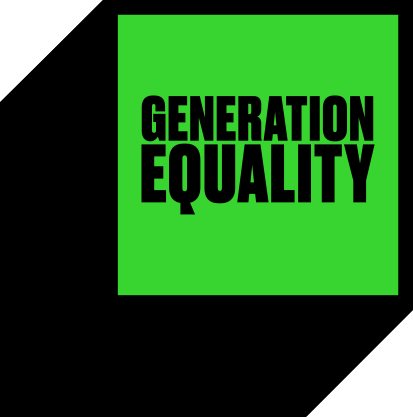
Equality
EDITOR IN CHIEF
- Adam Eli @adameli
ART DIRECTOR
- MP5 @mp5art
CONTRIBUTORS
- JUDY HEUMANN @theheumannperspective
- ANDRAÉA LAVANT @andraealavant
- CHELLA MAN @chellaman / PH @hunterabrams
- NOURA ERAKAT @nouraerakat / PH @edeani
- HIBA WALID YASSINE @paliart.by.hiba
- ON THE DIVIDE @onthedividemovie
- MAYA CUEVA @maya.cueva_
- LEAH GALANT @leah.galant
- PAXTON SMITH @paxtonasmith
- KUBRA KHADEMI @khademikubra
- MOTHERS2MOTHERS @mothers2mothers
- ARIMAN SCRIBA @arimanscriba / PH @alwaysithaka
- VARNITA SETHI @the.quirkmeister
- MAHILA ZINE @vichar_k_achaar
- OMNA TIGRAY @omnatigray
- CHIME @gucciequilibrium
- CHIME ZINE Editorial Assistant Stephanie Barclay


